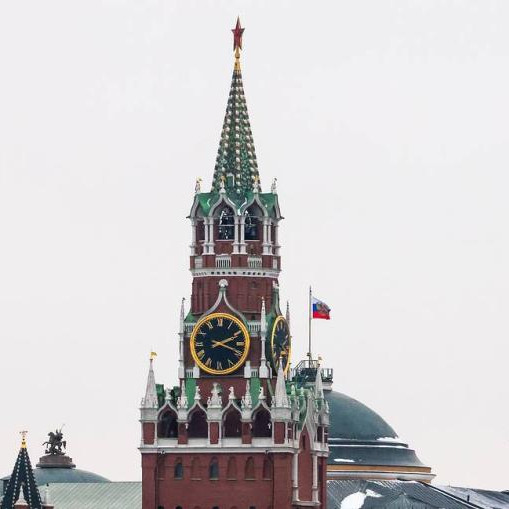It is well known that nothing passes without a trace in this world. The last Arab-Israeli war of 2006 is likely to go down in history as the beginning of a new round in the eternal race of armor versus missile. The whole world could witness Israel’s perfect modern army helpless to suppress the scattered missile launchers shelling its territory. The classic counterfire proved useless there. Still, it is easily assumed that in the near future, every shell and mine will hardly be able to hit the target even if launched successfully. Laser systems will be there to intercept any artillery munitions.
Israel and United States had cooperated to make combat laser systems as early as in 1990. In 1995, the two nations launched a joint development of a Tactical High Energy Laser (THEL) destroying missiles. Nine months later, the Nautilus system – a THEL precursor – successfully destroyed a flying jet projectile at a test in New Mexico. In April 1996, the US agreed to accelerate the project’s implementation, after Israel had suffered 20 or so attacks of Hezbollah projectiles.
The two nations’ joint efforts resulted in THEL. On August 8, 2000, the THEL-based battlefield missile-defense system was tested at White Sands. The system intercepted two 122-mm jet projectiles launched successively. The US Department of Defense happily went on about the new system’s prospects. However, an anonymous source in the Pentagon then confessed that the missiles were only intercepted on a third attempt. On the first two attempts, only one of the missiles was destroyed while the other could still hit the target. The laser was first tested in June 2006, when a single missile was successfully destroyed.
Initially THEL was designed as a stationary laser site deployed in specific places with all the necessary support provided for the uninterrupted functioning of the laser. However, they were turned into mobile systems later. Six trucks were needed to move the THEL equipment to a new loation; it was cumbersome. In addition, poisonous gases used by the system could leak out, which was dangerous. In addition, THEL efficiency data was rather controversial. While the Lexington Institute Research Center confirmed 46 successful interceptions of all types of projectiles – mines, missiles and artillery shells, the Massachusetts Technology Institute recognized only the 2000 test as successful – the one that destroyed two 122-mm projectiles. The test was staged in ideal weather conditions. It is worth noting that every launch cost $3,000 – it was too expensive. In 2004, the US army stopped financing the project. THEL’s poor performance was only one reason for that, however; more importantly, US national priorities changed at the time. For some reason, they deemed ballistic missiles the biggest threat to the US army and their allies and started making a powerful airborne laser which would destroy missiles at the active phase of their trajectory. However, Northrop Grumann continued working on its system independently, and eventually presented the Skyguard system in July 2006. There is very little information available about Skyguard today. It was actually developed on the basis of THEL, but used more advanced technologies and beat its precursor in power and range. Just like THEL, it was designed as a defense against a tactical ballistic missile attack, a jet projectile attack, shelling or bombardment.
Skyguard is installed on several towed platforms, can be transported by any type of vehicles, and does not require any support infrastructure. A single Skyguard can cover a circle with a ten-kilometer diameter by firing from the center.
Israel started working on a missile-defense system to counter unguided-missile attacks immediately after the 2006 war. Its ABM system will include interceptor squadrons and Skyguards. The first echelon of the system is to be developed in the next 18 months and deployed in the region of Gaza Strip. Israel’s Rafael Arms Development Authority is the chief contractor on the project. The laser systems will be complemented by small-range anti-aircraft complexes. Therefore, in addition to boasting the first national ABM system in the world, Israel will be the first country with an “anti-projectile perimeter.” If the system proves effective, it will mark the decline of old warfare. A laser can intercept cruise missiles and pilotless aircraft as well.
As a result, the potential adversary’s artillery will be far less effective. This consideration is very important for a number of the world’s conflict zones, especially for “low-intensity” conflicts. Guerillas can shoot a couple dozen jet projectiles or mines at a target at best; however, if that target is protected by a laser system, they wouldn’t harm it in the least. One must bear in mind that such attacks are a most common strategy used in such conflicts.
As laser system spread, they might shift the balance of forces in other conflict zones as well.
For example, in case of a war against North Korea, its very powerful artillery group should be duly considered. South Korea’s capital, Seoul, is well within its reach. Let’s solve a simple problem. The North Korean artillery’s firing rate is up to 8,000 projectiles per minute, while a tactical laser recharges every 35 msec, according to the data published. It can make 20 discharges per second, and its pulse power is equivalent to 30-50 kilos of explosive detonated on the target’s surface. Therefore, it makes a total of 1,200 discharges per minute. 8,000 divided by 1,200 gives 6.67, a relative value which is in fact the number of lasers needed to repel North Korea’s attack. True, a laser system actually making 1,200 successive discharges per minute can hardly be made right away. Let’s not forget it needs to aim before each discharge, that is, it needs to turn its turret, even if by a very small angle. In addition, a dozen lasers can hardly defend the civilian zone stretching for dozens of kilometers. The weather on the Korean Peninsula is not so sunny and the air not so transparent as in Israel, meaning the laser’s real potential is not so fantastic.
That is all true. But, if a preventive strike were carried on North Korea, its adversaries could torpedo its weakened backstroke with the help of laser systems, thus augmenting their offensive capabilities, because the damage made to them would be minimal.
This scenario is, of course, a prospect for 2015 or even 2025, but we should be ready for it. We could go on reforming and rearming the Russian army, to crawl up to the US Desert Storm-time level by the year 2020. But, honestly, is it any good making advanced weapons, intelligent projectiles, missiles and air bombs, if they get destroyed before hitting the target? The Topol M mobile ground launchers, the key weapons to be used by Russia’s strategic missile forces are virtually immune to any modern anti-ballistic missile defenses, including laser ones. However, let’s not forget that pilotless aircraft, robotic tools and weapons using new physical principles are still at the embryonic stage, and therefore are far from perfect. Along with upgrading the strategic nuclear shield, Russia’s defense industry needs to start designing such weapons today. Tomorrow might be too late. Suffice it to recall the WWI tanks, and what happened when their role was underestimated in WWII.









